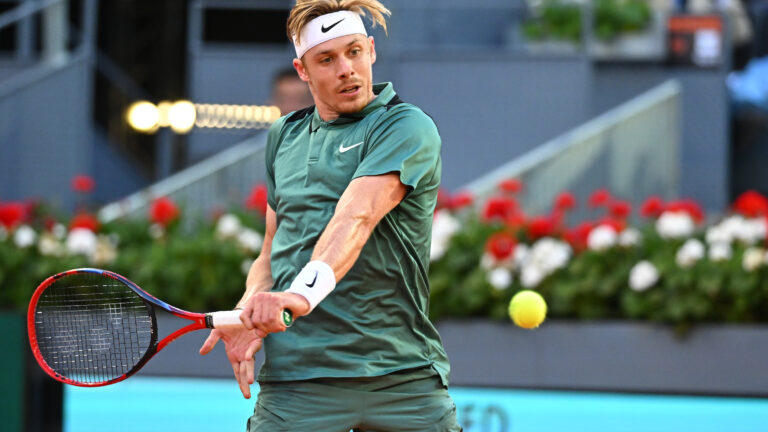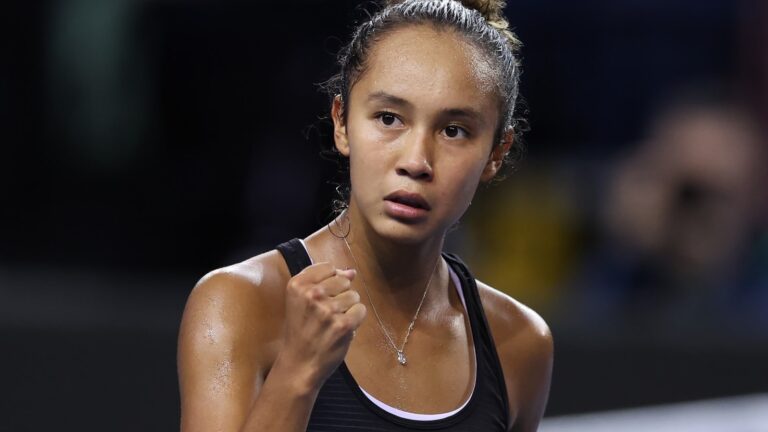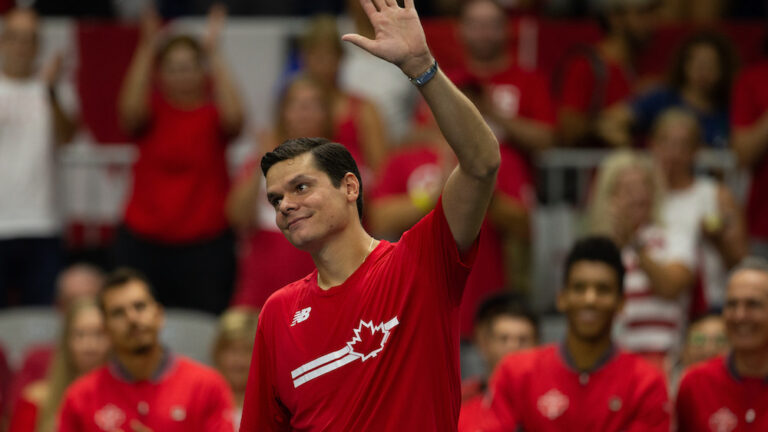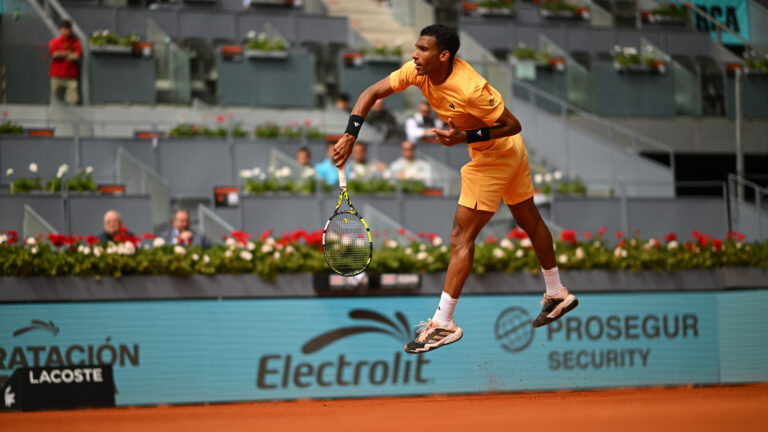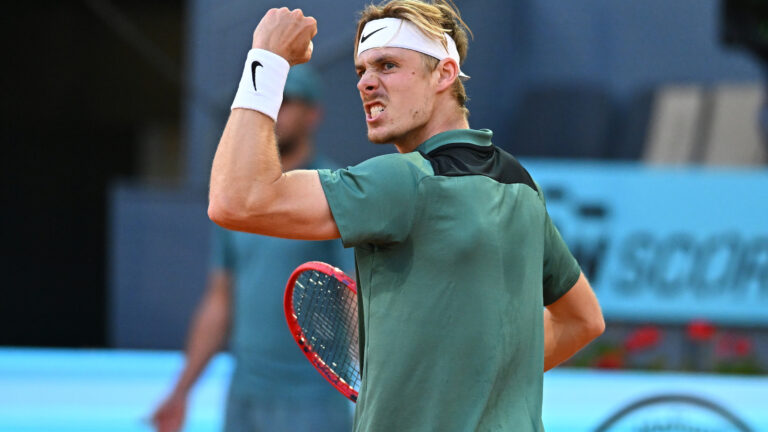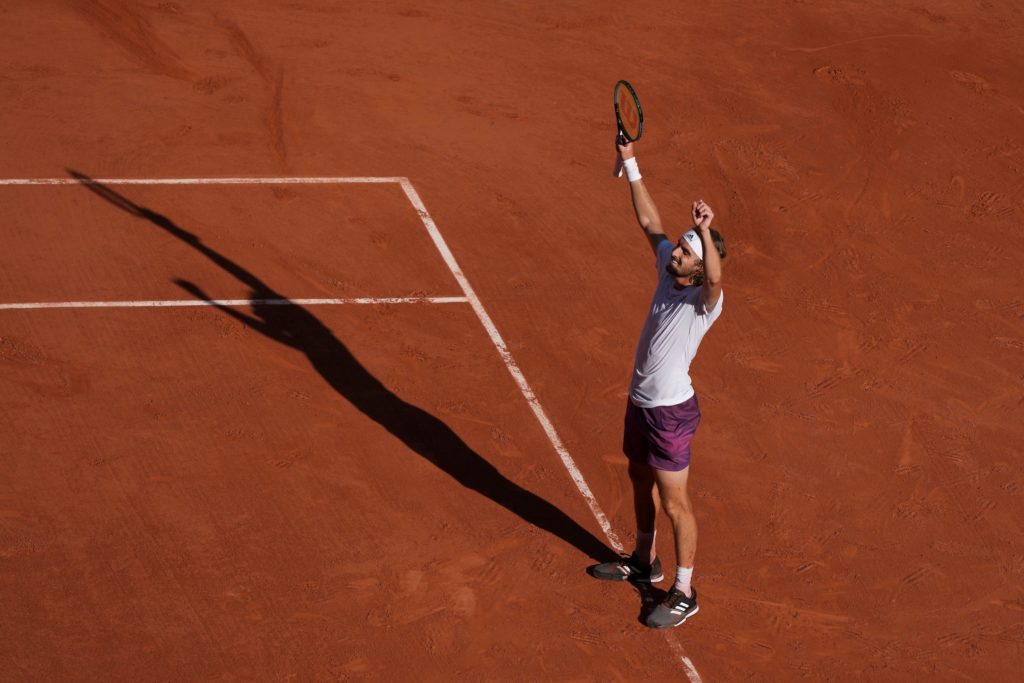
Photo : Martin Sidorjak/Tennis Canada
Stefanos Tsitsipas wants access to his coach.
All the time.
On EVERY SINGLE POINT.
Yup, really.
The Greek hero has his mind set on shaking things up and took to Twitter on July 18 to get his point across.
It’s unlikely the ATP will agree to his request any time soon, but the concept, which would constitute a huge change, deserves some serious thought.
First, a fact. He’s 100% correct in affirming that men’s tennis is the only sport in which coaching is verboten, since the WTA has allowed on-court coaching once per set and between sets at every tournament, except the Grand Slam events, since 2008.
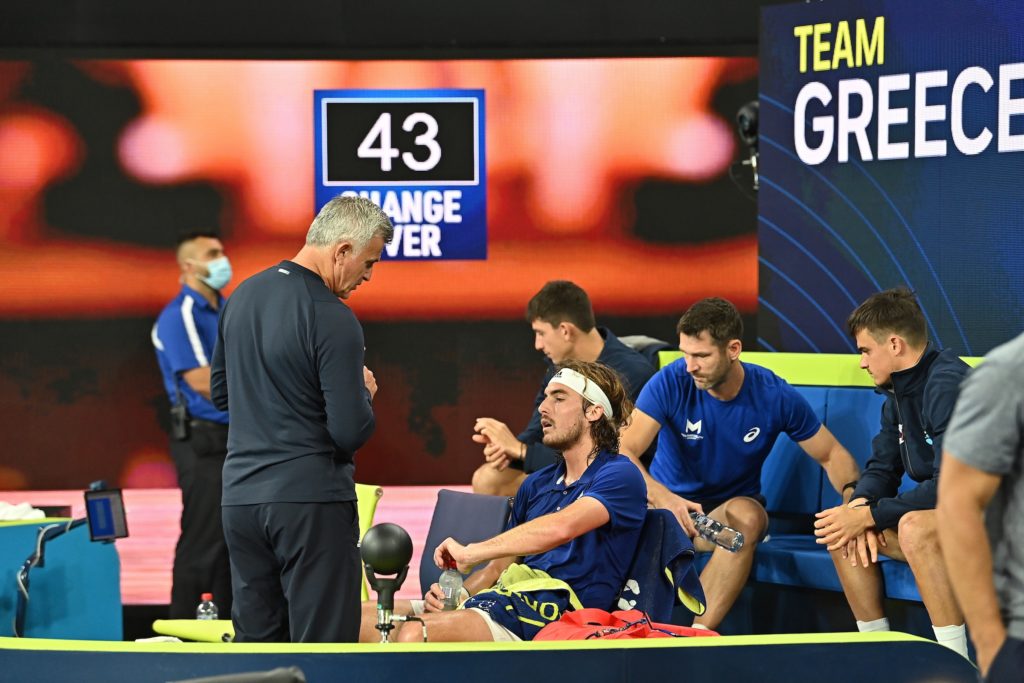
So, what are some of the positives and negatives of the proposed revolution?
Without sounding like a heretic, I think it’s fair to wonder why men’s tennis is the only sport in which athletes can’t be coached. Even in golf—the other major individual sport—athletes turn to their caddy (i.e. their coach, friend and part-time sports psychologist) for tips and input. In boxing, fighters are instructed in the ring and between rounds. Also in alpine skiing, between each round of an event, and in auto and bike racing, where the competitors are always tuned in to their team’s radio.
Men’s tennis is on its own.
One point for Tsitsipas.
In February 2020, just a month before the world came to a screeching halt, esteemed coach and TV commentator Darren Cahill voiced his support for coaching from the player box when the WTA was trying it out at the event in Dubai. The pandemic put the experiment, and indeed all of tennis, on hold.
Cahill wasn’t asking for time for long-winded discussions, he just wanted to give a few quick pointers to get the player back on track or keep her momentum going.
A side-effect of the ban is that coaches still try to get messages to their protégés, and coaching from the stands happens all the time. One of the most famous incidents happened at the 2018 US Open, when Patrick Mouratoglou got caught coaching Serena Williams—something others have done time and time again.
By imposing a fine of up to $5,000, the ATP set a rule that players are fully prepared to break if it will help them win a match (and claim 100 times more in prize money).
Two points for Tsitsipas.
Even so, the suggestion veers toward wishful thinking when the World No.4 asks for coaching at every point. Can you imagine the potential issues that would arise during the matches, which, by the way, the ATP is doing everything in its power to shorten?
A coach would have 24 seconds between the end of each point and the start of the next serve when the player is on the right side. Seeing as there’s no countdown between a player’s first and second serve, you can imagine how much coaches will have to say then.
One point for Tsitsipas’ opponents.
And what about TV coverage? Commentators don’t usually speak during rallies, so they have 24 seconds to provide an analysis. Of course, coaches will likely be miked (as they are in the WTA), and hearing them steady their athlete is fun for fans and definitely part of the show.
That said, it would be a challenge for TV producers to know when to silence the commentators so viewers can catch the on-court conversation.
Two points for Tsitsipas’ opponents.
Finally, purist or not, there’s something fascinating about players having to rely only on only themselves and their tactical creativity to win. That intangible psychological aspect introduces elements of suspense and drama to tennis, and that mental fortitude is what enables a player to make an impossible comeback while her/his rival collapses like a house of cards, yielding an unforeseeable and unexpected outcome.
As a matter of fact, don’t we remember Tsitsipas’ shock in the Roland-Garros final, when Novak Djokovic overcame a two-sets deficit to beat the Greek and won his 19th Grand Slam title?
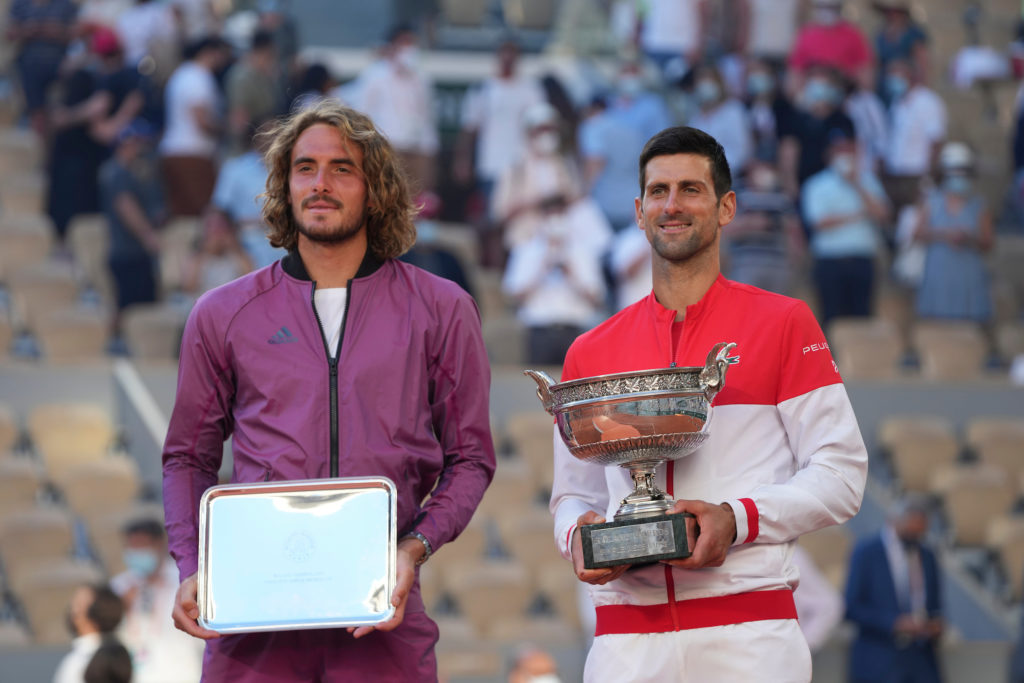
Three points for Tsitsipas’ opponents.
That makes the score 3-2 for the opponents.
Whose side are you on?
A medal run for Félix?
Félix Auger-Aliassime could head home from Tokyo with some gleaming new hardware around his neck.
Why? Because he’ll be competing in the Games.
And because several others won’t be (see list below) for all sorts of reasons, so there’s a bit more breathing room.
On the men’s side, five members of the Top 10 and 10 of the Top 20 have decided to skip the event.
Still, the fact that a few contenders are out of the draw doesn’t take the shine off a win or good results.
In 1992, World No.44 Marc Rosset of Switzerland came out on top at the Olympics in Barcelona, where the top seeds were none other than Jim Courier, Stefan Edberg, Pete Sampras, Goran Ivanisevic, Boris Becker and Michael Chang.
In 2016, No.34 Monica Puig of Puerto Rico won it all in Rio over the likes of Serena Williams, Angelique Kerber, Garbine Muguruza, Agnieszka Radwanska, Venus Williams and Roberta Vinci.
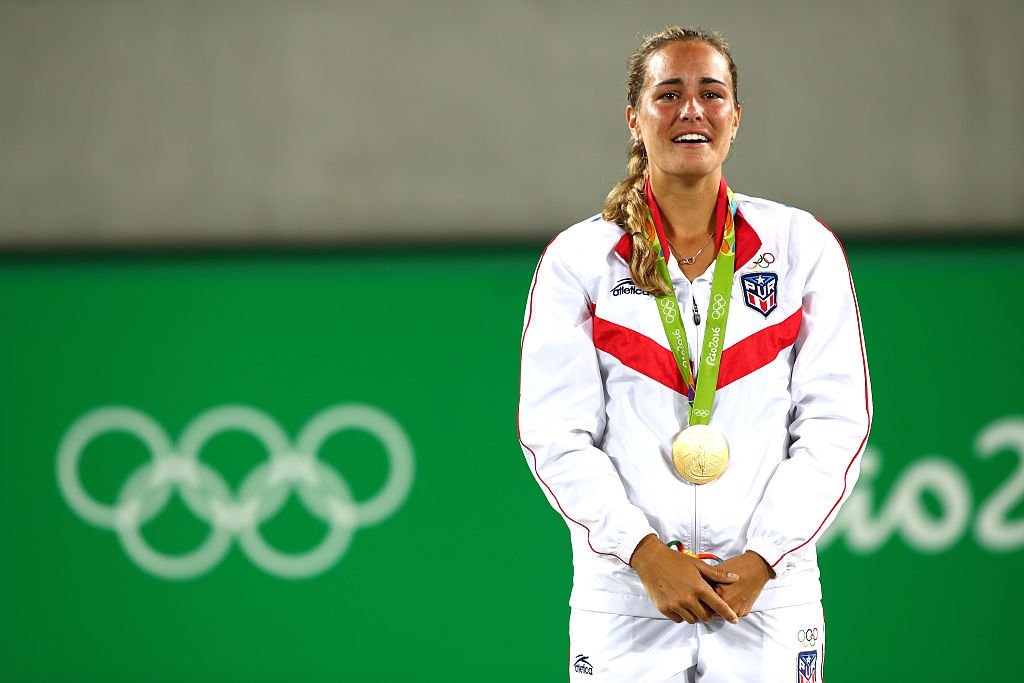
Now, don’t interpret my assertion that Félix’s chances at a medal are good because some of his peers won’t be in action as a lack of faith. The fact remains that despite his phenomenal progress and eight ATP finals, the 20-year-old still has to rack up a few more small victories to win an event with his former next gen friends.
To step onto the podium, Félix will have to operate at the same level that carried him at three grass events this summer and brought his ranking up to No.15.
Even with some noticeable absentees, it won’t be easy. He’s never had to face Novak Djokovic, who’s absolutely terrifying at the moment. As far as the rest of the field, Félix will have to figure it out.
He’s 2-4 against Tsitsipas and lost their last four matches. He’s never defeated Medvedev (0-1) or Rublev (0-2). He’s 1-3 against Zverev. Then again, he’s done better against Hurkacz (2-0), Schwartzman (1-1) and Carreno Busta (1-0).
Félix has already said that competing in the Olympics is a dream come true, and a medal would be yet another achievement for our local hero, who’s as affable as he is talented.
Now, back to that woefully long list of players who will be missing the Games. You’ll recall I talked about it right here on May 18.
Here’s a partial list of the members of the Top 20 and other big names who won’t be at Ariake Tennis Park (rankings in parenthesis).
ATP
- R.Nadal (3)
- D. Thiem (6)
- M. Berrettini (8)
- R. Federer(9)
- D. Shapovalov (10)
- C. Ruud (14)
- R.Bautista Agut (16)
- Alex de Minaur (17)
- C. Garin (19)
- D. Goffin (20)
- M. Raonic (22)
- D. Evans (27)
- S. Wawrinka (29)
- N. Kyrgios (56)
- R. Gasquet (59)
- V. Pospisil (60)
WTA
- B. Andreescu (5)
- S. Halep (10)
- V. Azarenka (14)
- S. Williams (16)
- A. Kerber (22)
- Cori Gauff (25)
- Madison Keys (26)
- J. Konta (38)
The Original 9
If you’re less familiar with the history of tennis, you may have heard about the singular story that led to the creation of the Women’s Tennis Association in the 2017 film Battle of the Sexes about a 1973 match that made headlines when World No.1 Billie Jean King accepted a challenge by 55-years-old veteran Bobby Riggs.
Among the secondary plots is the tale of the movement set in motion by nine women’s tennis players and a promoter to dismantle the patriarchy in their sport. Three years before the events depicted in the film, the women created the Virginia Slims Circuit that morphed into the WTA. We therefore have the Original 9 to thank for the women’s tennis we know today, as well as the MAJOR increase in prize money.
In addition to being original—as in, first—they’re also original—as in, avant-garde—because they had the courage, nerve, determination and resilience to topple the male-dominated system. On July 17, the International Tennis Hall of Fame hosted an induction ceremony for the nine pioneers.
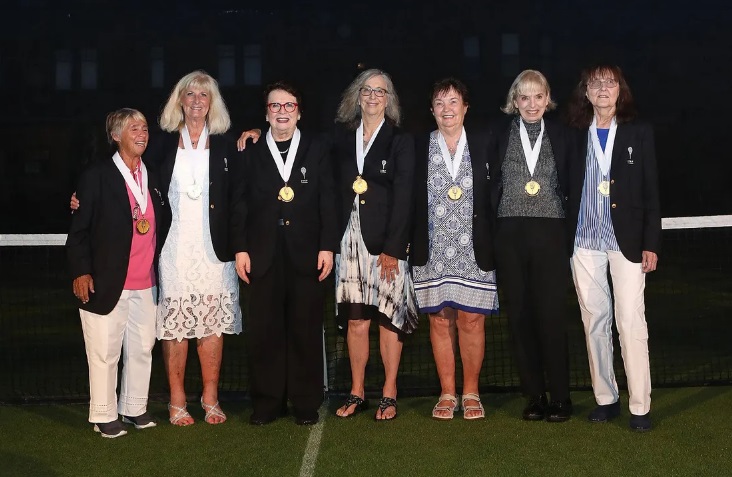
Billie Jean King—certainly the most famous among them—made a moving speech and then gave the floor to Rosie Casals, Peaches Bartkowicz, Valerie Ziegenfuss, Julie Heldman, Kerry Melville Reid and Kristy Pigeon.
Nancy Richey was absent, and Judy Tegart Dalton appeared virtually.
Julie Heldman is the daughter of Gladys Heldman, the tireless promoter and founder of World Tennis Magazine who sparked the movement with the athletes. Each of them contributed the symbolic sum of $1 to found the organization. Want to know more? Click here.
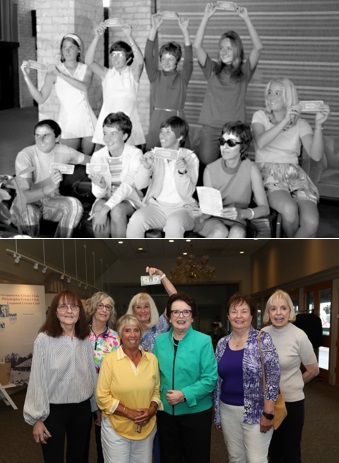
Madame Monfils
In tennis as in life, traditions are important to some, including the player formerly known as Elina Svitolina.
On July 17, she married Gaël Monfils and promptly took his name.
Congratulations to the newlyweds!
Tsitsipas loses his head
I figured since I started things off with him, I should also end with Stefanos Tsitsipas, who totally lost his head last week in Hamburg.
There’s really no other way to say it.
Get in touch with me!
Email: privard@tenniscanada.com
Twitter: @paul6rivard
Follow all our Canadians in action here.
